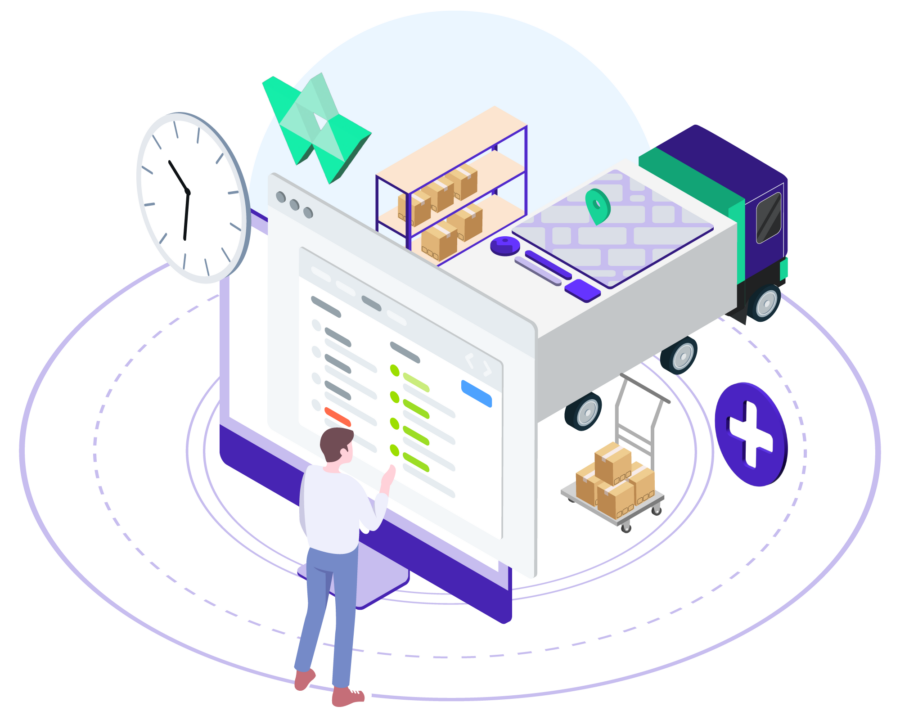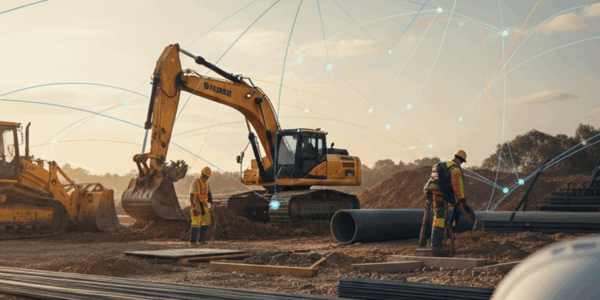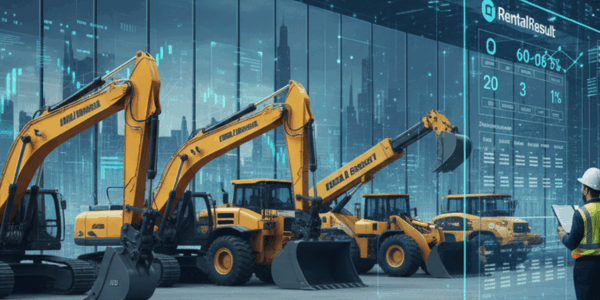
We advise all of our clients in the same manner: To manage the mobilization and deployment of your construction equipment and tools effectively to your job sites, you will want to treat each job site as though they were a customer. It doesn’t matter what percentage of demand you fulfil through sending your own plant and what percentage you re-hire from external suppliers. Either way, you should treat the job site as though they were a customer.
Since your internal “customer” can be associated with a specific project, you can manage the allocation and movement process as an internal plant-hire business. You don’t have to generate AR invoices (unless you want to), but it does allow you to accurately track costs, mobilization, assets, utilisation and charging at a job site, customer and project level.
In today’s blog, we describe seven areas of focus that can make management, deployment, and allocation of plant more effective when you use our “job site as a customer” strategy.
1. Control: Charging and Orders
When you start to view your job sites as customers, you will immediately see that each has its own unique challenges and needs. This should be taken into consideration when you’re managing charges and plant hire orders as well—no one way will work for every job site, so flexibility is the key here.
For example, you may want to set up every job site and/or project with its own charging information. You may have a standard internal rate for an excavator, but due to the remoteness of a location or the density of projects in a particular region, rates may be higher. And, rates should be controlled based on a range of variables, including hours, days, weeks, months, excess hours, or duration. Again, flexibility here gives you total control in the end.
2. Visible Traceability: Allocation & Delivery
Whether you use requisitions to trigger demand or have a central plant hire desk to handle requests for the deployment and allocation of plant, you should have a distinct process in place to manage them. Requisition items aren’t just for plant hire, they can become orders for tools, additional services or consumables as well. Once the requisition is received, fulfilment can take place with the specific asset being placed on order.
Now, if you want to manage a full logistics process, then create pick lists and assign them to either your own delivery vehicles or, if necessary, arrange for an outside haulier and handle the costs and payments within the system.
If not already in place, having a mobile app for your drivers that allows for sign-off at the time of loading can make a huge impact on understanding where plant is and for how long. Once your equipment is delivered to the job site, it can be digitally signed for and the charge period will then begin. Having the job site sign off on the equipment’s condition at the time of delivery is also important to note, as you’ll see in the Equipment: Damage section of this post.
3. Traceability: Pickup & Return
The two previous sections are what make pickups and returns much easier to manage. Because the requisitioning and fulfilment process you’ve implemented tells you (and your job sites) what plant is where and since when, the job sites can quickly identify which plant is no longer in use and can request an off-hire to end any further charges. This improves your utilisation as plant no longer sits unused at a job site because someone simply forgot it was there (or assumed someone is coming to get it).
4. Plant: Damage
It’s inevitable—your plant and tools will return damaged at some point. Your off-hire and return process should include an inspection to assess the physical repair of the assets before loading them onto the truck. If you’ve been requiring job sites to sign off on the plant condition at the time of delivery, there should be no disputes as to who had ownership when the damage took place. After all, photos can be taken upon delivery and collection.
Charges for parts and labour should be billed back to the job site. Whether you include charges for loss of revenue during the plant’s downtime is dependent on your company’s policies and procedures.
5. Plant: Maintenance
Throughout your plant’s life, it will require regular maintenance and inspection. Creating scheduled maintenance is imperative for the longevity of your assets. Depending on the type of equipment, you may want to have maintenance scheduled for intervals of time, such as every six calendar months, every 100 days on hire or every 200 hours on the meter. Whatever method you choose, increasing the efficiency of your fitters by giving them a mobile app to record the maintenance steps performed is well worth it.
6. Plant Management: Utilisation
Because each delivery and off-hire is now being tracked, you can now begin to monitor and manage plant utilization by both time and financial measures. Which are your most under or over-utilised pieces of equipment? Is it wiser to purchase than to hire? These decisions can be made by reviewing your fleet and seeing who your star performers are.
7. Plant Management: Asset Finance
In this area, it’s not so much as to how (as we’ve found all of our clients have different ways of depreciating their assets) but as to where. If you’re using equipment tracking software and a separate ERP that pushes data back and forth, then the depreciation calculations should take place in one system and push the results to the other. This keeps all of your values in sync and removes the need for double data entry.
We hope these 7 areas of focus help you when you’re looking to better manage equipment at the job sites. We would love to hear your tips as to what you’re doing to track your assets!




